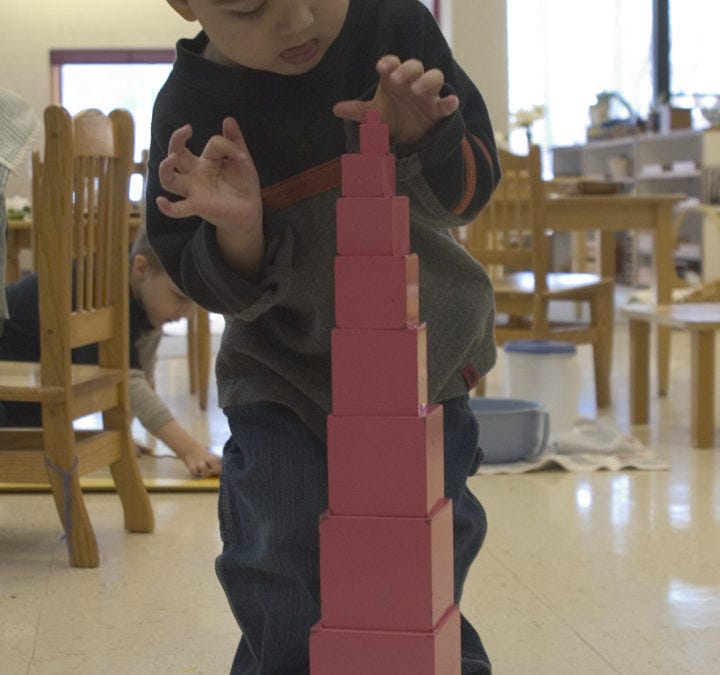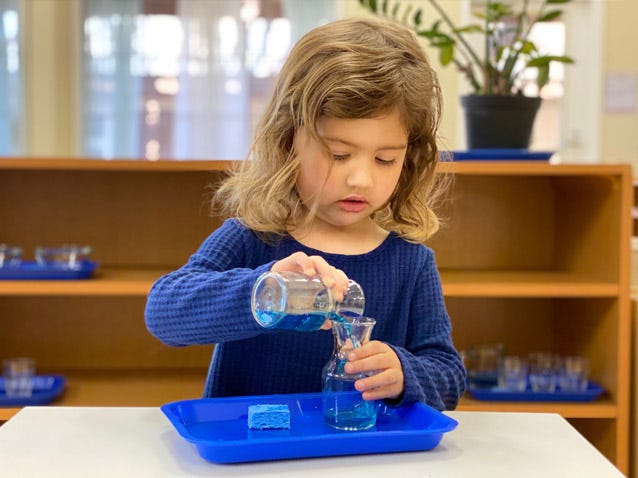I was captivated recently by a work of art I had never seen before. George Bothamley shared it at his Art Every Day Substack. It features Jean-Etienne Liotard’s beautiful exemplar of pastel drawing: “The Chocolate Girl” (1744).

What most struck me about this artwork is how the young woman in “The Chocolate Girl” embodies focus. The full pastel shows a young woman standing upright and taking a small step, with her elbows at her waist and both of her hands holding the tray. Her upright position shows her to be balanced. Her small step shows her unhurried, careful gait. Having her elbows resting on her waist helps to brace her forearms and maintain leverage on the tray.
Bothamley also helpfully zooms in on the young woman’s hands. She holds the tray with both hands at the midpoint of the tray’s sides, which helps her to maintain a firm grip on and balance of the tray while bearing drinking chocolate to its destination. Try replicating her hand and finger placement at home with a tray or large book as you balance a glass on it while walking. If you grip that differently from how she does, you’ll find it far more difficult to perform this task.
Next, Bothamley zooms in on the young woman’s face. And what a face! Her demeanor is calm; her brow is smooth; and her eyes are alert, looking forward, and slightly down somewhere beyond the right-hand side of the frame. Her focus is most likely directed at a seated patron who eagerly awaits the drinking chocolate. Her lips are slightly parted, the way one does when one is breathing shallowly while absorbed in a task.
This work drew my attention in part because I waitressed when I was in high school and college. I thus know what care it takes to carry a tray of glassware with beverages on it without spilling it on yourself or the customer who ordered it. Believe me, it only takes one unforgettable crash due to inattentiveness to wise up and look sharp . . . (I can still hear my manager yelling in her thick New York accent, “Whaaaaddidgeyahdooo?!?!?!”)
But mostly, I wondered about how focus shows up in Liotard’s “The Chocolate Girl” because of my familiarity with Maria Montessori’s extensive discussions of focus, concentration, and attention in children:
“A child who exercises himself in perceiving isolated stimuli with his various senses learns how to focus his attention and gradually perfects his psychic reactions, just as he trains his muscles through various exercises. He . . . lays the foundation for a spontaneous association of ideas, for reasoning processes based upon positive knowledge, and for mental stability. This secret training is the reason for those psychic explosions which bring so much joy to a child. It is then that he discovers the world about him. He admires the new things that are revealed to him and takes delight in his growing consciousness.”[1]
It is regarded as a hallmark of “Montessori kids” that they can sustain focus for hours at a time, absorbed in the flow of their work, moving with care, eyes laser-focused on the task at hand. Compare these images below of children at work in a Montessori classroom with Liotard’s pastel above:

Everything about “The Chocolate Girl” exudes the kind of focus that Montessorians ideally cultivate in their classrooms. May we all aspire to be so in the flow of our own work that we could be mistaken for being a “chocolate girl” or a “Montessori kid.”

[1] Maria Montessori, The Discovery of the Child, trans. M. Joseph Costelloe (1948; repr. New York: Random House, 1967), p. 312.




Beautifully focused idea. A lesson in being in the present moment.
What a nice essay! Focus is of course the locus of volition, and so it is the heart of what it means to be human. The painting embodies this aspect of us quite well, as you say. This kind of perfect embodiment is what I call the "exquisite." I wrote about it here and I invite you to come link this essay in a comment on it. https://kurtkeefner.substack.com/p/the-bust-of-caesar?r=7cant